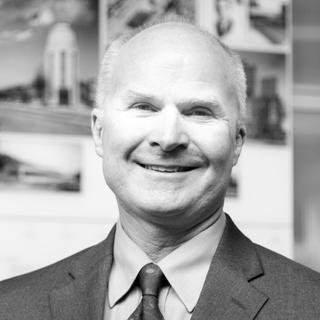July 19, 2021
Now that Epstein is officially a centenarian, we'll be counting down our Top 100 projects over the coming months, with our staff-selected Top 5 projects being revealed at our 100th anniversary party later this year. Today, we start off with no. 100: Chicago’s Lakeshore East Planned Development, completed in 2005.
Lakeshore East is a 27-acre multi-use planned development in the heart of Chicago’s lakefront, comprised of 9.7 million square feet of buildable area that includes a mix of townhouse and high-rise buildings, school, hotels, office buildings, and a new public park. For this project, Epstein served as the civil and structural engineer for the site development of the roadway system and infrastructure. Epstein’s engineers were responsible for the design of approximately 3,300 lineal feet of roadway, a 250-foot-long bridge structure, approximately 2,000 lineal feet of retaining wall, and 16,000 feet of storm sewer, sanitary sewer, and water main serving the development.
Epstein’s design includes extensive earthwork manipulation, including dynamic compaction and pre-consolidation through the use of a wick drain system. Prior to the reconstruction of Chicago’s lakefront, this site contained many boat slips used for the transfer of goods and materials. Loose clay material and debris from the Chicago Fire were eventually deposited in these slips. Consequently, the proposed embankment areas on the site are anticipated to induce a settlement of these soft deposits from 2 inches up to 18 inches. By combining dynamic compaction with a wick drain system, most of the consolidation occurred prior to the installation of utilities and paved surfaces that would otherwise be sensitive to such differential settlements.
Epstein’s engineers also coordinated closely with the owner, architect and landscape architect for the park hardscape and streetscape design that included the design of utility services for fountain pumping systems, surface and under drain facilities for features that included a playground, dog park, reflecting pools, planting beds, and activity fields.
In addition to our civil and structural engineering services, Epstein was also responsible for the site electrical and lighting systems for the park and public roadway. Lighting within the park included overhead lighting, pedestrian lighting, step lights, bollard lights, up-lighting, and fountain lighting.
Wonderfully enough, three individuals who worked on the project are still with Epstein today. Their memories are equally as impressive as their skill sets, given they were able to recall several interesting anecdotes and details about the project. First up is Dave Hilty, who is our Senior Civil Engineering Project Manager:
We kicked off the project on September 11, 2001 at 8:00am CT. Moments later, during the meeting, we heard of the sobering events at the World Trade Center.
The project lies within the Lake Michigan fill area and old boat slips. After the Chicago Fire, the boat slips were filled in with soil and debris. The project had to account for the loose fill in these areas through the use of dynamic compaction and surcharging of the areas with excess soil and incorporating a wick drain system in order to aid in the compaction of the embankment.
Lakeshore East was my first design and approval of a storm sewer connection to the Chicago River. Since then, I have completed six additional projects on the Chicago River including not only storm sewer connections but the use of river water for cooling at the 300 N LaSalle building.
Epstein designed the infrastructure for the entire Lakeshore East development which, to date, serves more than 10 high-rise towers and other mixed-use buildings.
Next up is John Lach, Epstein’s Senior Structural Project Engineer:
Most of my time was spent designing and coordinating the Field Boulevard Bridge. This was very challenging from a geometric standpoint due to steep slope. From the tie-in points at either end of the bridge, to the varying thickness of paving, to the tapered precast girder sole plates, there was little that seemed “typical” about this bridge. In fact, with the 5 percent slope from Randolph Street to Benton Place, we affectionately referred to this bridge as the “ski slope!” It has been interesting to see this area develop over the past 15 or so years.
And finally, Tom Smiles, our Director of Engineering:
The Lakeshore East Development was an extremely challenging project both from the technical engineering issues and from attempting to meet the expectations of a demanding client. The 27-acre site was the largest undeveloped site within the downtown limits. At the time the project started, it was a 9-hole Par 3 golf course. Many years prior, it was a railroad yard, so the site was highly contaminated with many environmental and geotechnical issues.
The project included design of the following: More than three miles of storm sewer with a discharge to the Chicago River, watermain, sanitary sewer, multi-level roadways with connections to existing bridges and roadways, bridge structures, and a park.
Team Members



